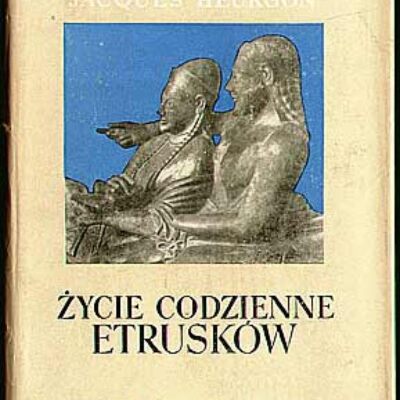The ancient period in relation to the Apennine Peninsula is associated primarily with the theater of history, full of all kinds of events, with the Roman state in the lead role. This is due to the fact that from the fall of the last free Etruscan city called Volsinii in 264 BCE until the fall of the western part of the Roman state in 476 CE, the “wolf people”, as the Romans called themselves, ruled this area indivisibly. Assuming only the image of Italy as a Roman land, we make a simplification that is dangerous for our understanding of history, because, at the very beginning of history, this region was inhabited by various, often even unrelated peoples. The story of one of such peoples, in which special emphasis is placed on the aspects of everyday life, tells us in his book entitled. “Daily Life of the Etruscans” French historian, Mr. Jacques Heurgon.
This book is not a new item. However, despite this fact, it is worth reading because of a large handful of information about both the Etruscans themselves and the people with whom they came into contact. We know quite a lot about the Etruscans themselves, but this is the information provided to us by ancient authors who did not belong to this person, as well as information provided by archaeological research. Recently, genetics has come to help in solving the problem of the origin of the Etruscan people. Studies of what are considered to be “Etruscan” human remains have indicated, at the same time, numerous discussions, the eastern origin attributed to them by the “father of history” Herodotus, but they have not unequivocally confirmed it. It is worth noting here that the Etruscans themselves had no ethnic and racial prejudices and assimilated the peoples who lived next to them, together with the children of their slaves (mainly prisoners of war), which made their genetic material very quickly diversified, and what united them was the language (to this day not very understandable to us), culture and religion (revealed and quite pessimistic). Only the genetic study of the varieties of cattle (Tuscan cows), which have been bred since ancient times in today’s Tuscany, which basically coincides with the former Etruria, showed that these old varieties came centuries ago from the areas of today’s Asia Minor with their Etruscan owners. Mr. Heurgon, writing his excellent and still useful book about the mysterious inhabitants of ancient Etruria, drew attention to the significant amount of eastern elements in their culture and customs, the presence of which, as modern genetics has shown, is not at all accidental.
In conclusion, I can say that the book in question is worth reading to enrich our knowledge of Italy’s slightly neglected past.


